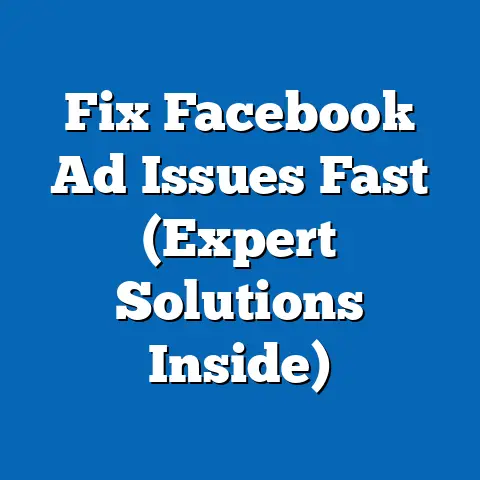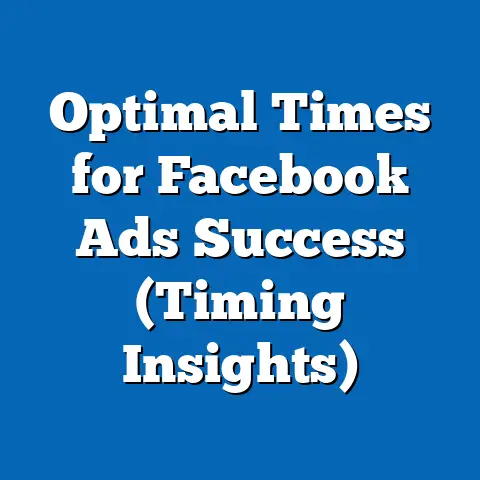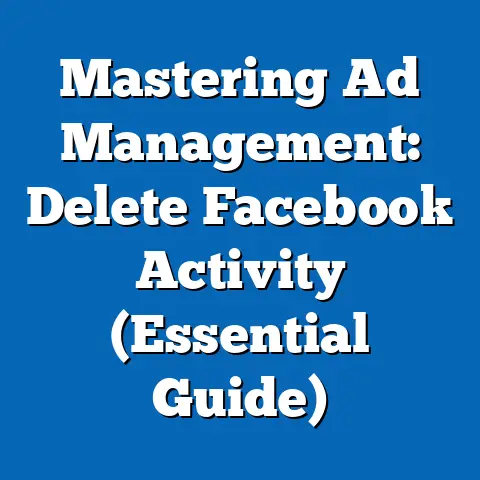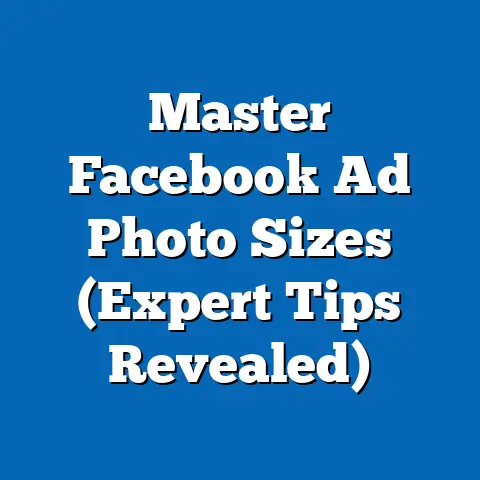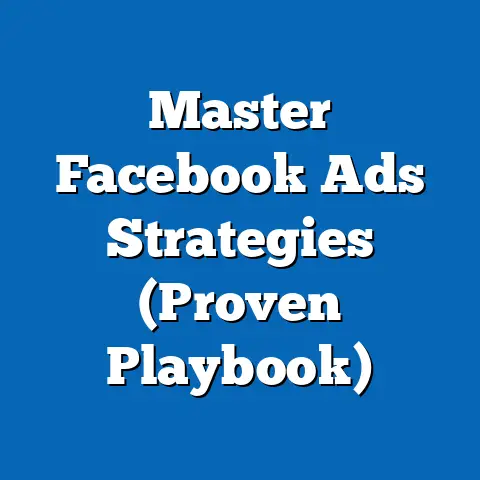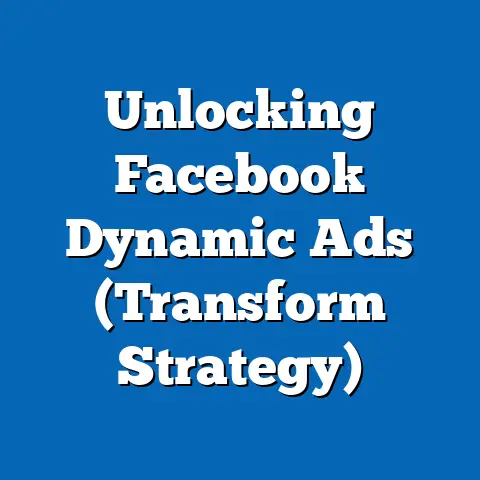Maximize Facebook Ads with iOS Manager (Expert Strategies)
Maximize Facebook Ads with iOS Manager: Expert Strategies for Success
The digital marketing landscape is a constantly shifting battlefield. What worked yesterday might be obsolete today. User behavior changes, privacy regulations tighten, and platform algorithms… well, let’s just say they keep us on our toes. If you want to stay ahead of the game, you need to be adaptable. And when it comes to Facebook advertising, especially targeting iOS users, that adaptability hinges on understanding and leveraging the power of iOS Manager.
I remember when Apple’s App Tracking Transparency (ATT) rolled out. Panic rippled through the marketing world. Suddenly, the data we relied on seemed to vanish overnight. Campaigns that were humming along suddenly sputtered. That’s when I really started digging into iOS Manager, and I realized it wasn’t just a tool to survive, but a tool to thrive in this new reality.
This article isn’t just about surviving; it’s about dominating. I’m going to share the expert strategies I’ve learned through trial and error, countless A/B tests, and a healthy dose of caffeine. We’ll explore how to leverage iOS Manager to optimize your Facebook ads, navigate privacy changes, and ultimately drive results that will make your bottom line sing.
Understanding the iOS Manager
So, what exactly is iOS Manager? It’s not a standalone application, but rather a suite of features and tools within Facebook Ads Manager specifically designed to help you manage and optimize your campaigns for iOS devices and users. Think of it as your control center for navigating the Apple ecosystem within the broader Facebook advertising universe.
The significance of iOS Manager stems from the sheer size and value of the iOS audience. Apple users are often considered a premium demographic, with higher average incomes and a greater propensity to spend. Reaching them effectively is crucial for many businesses.
The features and functionalities within iOS Manager are multifaceted:
- Aggregated Event Measurement (AEM): This is a big one. AEM helps you measure campaign performance in a privacy-safe way, even when users have opted out of tracking. It allows you to prioritize up to eight conversion events for your domain, giving you valuable data even with limited tracking.
- Attribution Windows: You can adjust your attribution windows to better understand the impact of your ads on iOS users. This is particularly important in a post-ATT world.
- Custom Audience Creation: iOS Manager helps you build custom audiences based on various criteria, allowing you to target specific segments of iOS users.
- Reporting and Analytics: The reporting features provide insights into how your campaigns are performing on iOS devices, allowing you to make data-driven decisions.
iOS Manager seamlessly integrates with Facebook Ads Manager. You don’t need to download a separate app or learn a new interface. It’s all right there, within the platform you already know. This integration is key because it allows you to manage all your campaigns, regardless of the target device, from a single location. It provides a holistic view of your advertising efforts and makes it easier to optimize for iOS specifically.
Takeaway: iOS Manager is your key to unlocking the potential of Facebook advertising on iOS. It’s a collection of features and tools within Ads Manager that helps you navigate privacy changes, optimize for iOS users, and drive better results.
Setting Up Your Facebook Ads for iOS
Now that we understand what iOS Manager is, let’s talk about how to set up your Facebook ads specifically for iOS users. This isn’t just about selecting “iOS” in your targeting options. It’s about crafting a strategy that resonates with Apple users and takes advantage of the platform’s capabilities.
Here’s a step-by-step guide:
-
Audience Targeting: This is where you define who you want to reach. Within Ads Manager, you can target users based on demographics (age, gender, location), interests, behaviors, and more. When targeting iOS users, consider these factors:
- Demographics: iOS users often skew slightly older and have higher average incomes than Android users. Tailor your messaging accordingly.
- Interests: What are iOS users interested in? Think about apps, technology, premium brands, and experiences.
- Behaviors: Look at purchase behaviors, mobile device usage, and engagement with specific types of content.
-
Ad Formats and Placements: Mobile is king. iOS users are glued to their iPhones, so your ads need to be mobile-optimized.
-
Ad Formats: Consider using formats like video ads, carousel ads, and collection ads, which are visually engaging and perform well on mobile.
- Placements: Test different placements to see what works best for your target audience. Facebook and Instagram Feeds, Stories, and Audience Network are all viable options.
-
Creative Content: Your ad creative is what will grab (or fail to grab) the attention of iOS users.
-
Visuals: Use high-quality images and videos that are visually appealing and relevant to your target audience.
- Copy: Keep your ad copy concise, engaging, and benefit-driven. Highlight the value proposition of your product or service.
- Call-to-Action (CTA): Use strong CTAs that encourage users to take action. “Shop Now,” “Learn More,” “Download Now” are all effective options.
Audience Targeting: This is where you define who you want to reach. Within Ads Manager, you can target users based on demographics (age, gender, location), interests, behaviors, and more. When targeting iOS users, consider these factors:
- Demographics: iOS users often skew slightly older and have higher average incomes than Android users. Tailor your messaging accordingly.
- Interests: What are iOS users interested in? Think about apps, technology, premium brands, and experiences.
- Behaviors: Look at purchase behaviors, mobile device usage, and engagement with specific types of content.
-
Ad Formats and Placements: Mobile is king. iOS users are glued to their iPhones, so your ads need to be mobile-optimized.
-
Ad Formats: Consider using formats like video ads, carousel ads, and collection ads, which are visually engaging and perform well on mobile.
- Placements: Test different placements to see what works best for your target audience. Facebook and Instagram Feeds, Stories, and Audience Network are all viable options.
-
Creative Content: Your ad creative is what will grab (or fail to grab) the attention of iOS users.
-
Visuals: Use high-quality images and videos that are visually appealing and relevant to your target audience.
- Copy: Keep your ad copy concise, engaging, and benefit-driven. Highlight the value proposition of your product or service.
- Call-to-Action (CTA): Use strong CTAs that encourage users to take action. “Shop Now,” “Learn More,” “Download Now” are all effective options.
Ad Formats and Placements: Mobile is king. iOS users are glued to their iPhones, so your ads need to be mobile-optimized.
Ad Formats: Consider using formats like video ads, carousel ads, and collection ads, which are visually engaging and perform well on mobile.
Creative Content: Your ad creative is what will grab (or fail to grab) the attention of iOS users.
Visuals: Use high-quality images and videos that are visually appealing and relevant to your target audience.
Example: Let’s say you’re promoting a new productivity app designed for professionals. Your targeting might focus on iOS users aged 25-54 with interests in business, technology, and productivity. Your ad creative could feature a short video showcasing the app’s key features and benefits, with a CTA like “Download Now and Boost Your Productivity!”
Takeaway: Setting up your Facebook ads for iOS requires careful consideration of audience targeting, ad formats, placements, and creative content. Focus on mobile optimization and creating compelling visuals and copy that resonate with Apple users.
Expert Strategies for Maximizing Ad Performance
Now for the good stuff. Let’s dive into the expert strategies I’ve used to maximize ad performance on iOS. These aren’t just theoretical concepts; they’re battle-tested tactics that have delivered real results.
Strategy 1: Data-Driven Decision Making
In the world of digital marketing, data is your most valuable weapon. iOS Manager provides a wealth of data analytics that you can use to inform your ad strategy. But simply collecting data isn’t enough; you need to know how to interpret it and use it to make informed decisions.
-
Tracking Key Performance Indicators (KPIs): Identify the KPIs that are most relevant to your business goals. These might include:
- Reach: The number of unique users who saw your ad.
- Impressions: The number of times your ad was displayed.
- Click-Through Rate (CTR): The percentage of users who clicked on your ad.
- Conversion Rate: The percentage of users who completed a desired action (e.g., purchase, sign-up).
- Cost Per Acquisition (CPA): The cost of acquiring a new customer.
- Return on Ad Spend (ROAS): The revenue generated for every dollar spent on advertising.
- Analyzing Real-Time Data: iOS Manager provides real-time data that allows you to see how your campaigns are performing. Pay attention to trends and patterns. Are certain ads performing better than others? Are there specific times of day when your ads are more effective?
-
Adjusting Campaigns Based on Data: Don’t be afraid to make changes to your campaigns based on the data you’re seeing. This might involve:
-
Adjusting Bids: Increase bids for ads that are performing well and decrease bids for ads that are underperforming.
- Refining Targeting: Narrow your targeting to focus on the users who are most likely to convert.
- Updating Creative: Refresh your ad creative to keep it engaging and relevant.
- Pausing Underperforming Ads: Don’t waste money on ads that aren’t delivering results.
Tracking Key Performance Indicators (KPIs): Identify the KPIs that are most relevant to your business goals. These might include:
- Reach: The number of unique users who saw your ad.
- Impressions: The number of times your ad was displayed.
- Click-Through Rate (CTR): The percentage of users who clicked on your ad.
- Conversion Rate: The percentage of users who completed a desired action (e.g., purchase, sign-up).
- Cost Per Acquisition (CPA): The cost of acquiring a new customer.
- Return on Ad Spend (ROAS): The revenue generated for every dollar spent on advertising.
- Analyzing Real-Time Data: iOS Manager provides real-time data that allows you to see how your campaigns are performing. Pay attention to trends and patterns. Are certain ads performing better than others? Are there specific times of day when your ads are more effective?
-
Adjusting Campaigns Based on Data: Don’t be afraid to make changes to your campaigns based on the data you’re seeing. This might involve:
-
Adjusting Bids: Increase bids for ads that are performing well and decrease bids for ads that are underperforming.
- Refining Targeting: Narrow your targeting to focus on the users who are most likely to convert.
- Updating Creative: Refresh your ad creative to keep it engaging and relevant.
- Pausing Underperforming Ads: Don’t waste money on ads that aren’t delivering results.
Adjusting Campaigns Based on Data: Don’t be afraid to make changes to your campaigns based on the data you’re seeing. This might involve:
Adjusting Bids: Increase bids for ads that are performing well and decrease bids for ads that are underperforming.
Example: I once ran a campaign for an e-commerce store selling organic skincare products. Initially, the campaign was targeting a broad audience of women aged 25-54. However, after analyzing the data, I noticed that the ads were performing much better among women aged 35-44 with interests in organic products and sustainable living. I refined the targeting to focus on this specific segment, and the conversion rate increased by 30%.
Takeaway: Data-driven decision making is essential for maximizing ad performance on iOS. Track your KPIs, analyze real-time data, and make adjustments to your campaigns based on what you’re seeing.
Strategy 2: A/B Testing for Optimization
A/B testing (also known as split testing) is the process of comparing two versions of an ad to see which one performs better. It’s a powerful tool for optimizing your campaigns and identifying what resonates with your target audience.
-
Elements to Test: There are countless elements you can test, including:
- Ad Copy: Test different headlines, descriptions, and body text.
- Visuals: Test different images and videos.
- CTAs: Test different call-to-action buttons.
- Targeting: Test different audience segments.
- Placements: Test different ad placements (e.g., Facebook Feed, Instagram Stories).
- Analyzing Results Effectively: Once you’ve run your A/B test, it’s important to analyze the results to determine which version performed better. Look at metrics like CTR, conversion rate, and CPA.
- Implementing the Winning Version: Once you’ve identified the winning version, implement it in your main campaign. But don’t stop there! Continue to test and optimize your ads to improve performance over time.
Elements to Test: There are countless elements you can test, including:
- Ad Copy: Test different headlines, descriptions, and body text.
- Visuals: Test different images and videos.
- CTAs: Test different call-to-action buttons.
- Targeting: Test different audience segments.
- Placements: Test different ad placements (e.g., Facebook Feed, Instagram Stories).
- Analyzing Results Effectively: Once you’ve run your A/B test, it’s important to analyze the results to determine which version performed better. Look at metrics like CTR, conversion rate, and CPA.
- Implementing the Winning Version: Once you’ve identified the winning version, implement it in your main campaign. But don’t stop there! Continue to test and optimize your ads to improve performance over time.
Example: I recently ran an A/B test for a client selling online courses. We tested two different headlines: “Learn a New Skill and Boost Your Career” vs. “Unlock Your Potential with Our Online Courses.” The second headline, “Unlock Your Potential with Our Online Courses,” performed significantly better, with a 20% higher CTR. We implemented the winning headline in our main campaign and saw a noticeable increase in overall performance.
Takeaway: A/B testing is a crucial part of optimizing your Facebook ads for iOS. Test different elements, analyze the results, and implement the winning versions to improve performance.
Strategy 3: Retargeting Strategies
Retargeting is the process of showing ads to users who have already interacted with your brand in some way (e.g., visited your website, watched a video, added items to their cart). It’s a highly effective way to re-engage potential customers and drive conversions.
-
Creating Custom Audiences: iOS Manager allows you to create custom audiences based on various criteria, including:
- Website Visitors: Target users who have visited your website.
- App Users: Target users who have downloaded your app.
- Video Viewers: Target users who have watched your videos.
- Engagement on Facebook/Instagram: Target users who have liked your page, commented on your posts, or interacted with your ads.
-
Best Practices for Implementation:
-
Segment Your Audiences: Don’t just create one giant retargeting audience. Segment your audiences based on their behavior and tailor your messaging accordingly.
- Use Dynamic Ads: Dynamic ads automatically show users the products they’ve viewed on your website.
- Offer Incentives: Encourage users to take action by offering incentives like discounts or free shipping.
- Frequency Capping: Don’t bombard users with too many ads. Set a frequency cap to limit the number of times they see your ads.
Creating Custom Audiences: iOS Manager allows you to create custom audiences based on various criteria, including:
- Website Visitors: Target users who have visited your website.
- App Users: Target users who have downloaded your app.
- Video Viewers: Target users who have watched your videos.
- Engagement on Facebook/Instagram: Target users who have liked your page, commented on your posts, or interacted with your ads.
-
Best Practices for Implementation:
-
Segment Your Audiences: Don’t just create one giant retargeting audience. Segment your audiences based on their behavior and tailor your messaging accordingly.
- Use Dynamic Ads: Dynamic ads automatically show users the products they’ve viewed on your website.
- Offer Incentives: Encourage users to take action by offering incentives like discounts or free shipping.
- Frequency Capping: Don’t bombard users with too many ads. Set a frequency cap to limit the number of times they see your ads.
Best Practices for Implementation:
Segment Your Audiences: Don’t just create one giant retargeting audience. Segment your audiences based on their behavior and tailor your messaging accordingly.
Example: I worked with an online retailer that was struggling with abandoned carts. We implemented a retargeting campaign that targeted users who had added items to their cart but didn’t complete the purchase. The ads featured the exact items that the users had left in their cart, along with a discount code. This campaign resulted in a 15% increase in completed purchases.
Takeaway: Retargeting is a powerful strategy for maximizing ad effectiveness on iOS. Create custom audiences based on user behavior, segment your audiences, use dynamic ads, offer incentives, and set frequency caps.
Strategy 4: Budget Optimization Techniques
Managing your budget effectively is crucial for maximizing your return on ad spend. iOS Manager provides various tools and features to help you optimize your budget.
-
Understanding Cost-Per-Click (CPC) and Return on Ad Spend (ROAS):
- CPC: The cost you pay for each click on your ad.
- ROAS: The revenue you generate for every dollar spent on advertising.
-
Making Budget Decisions:
-
Set a Daily or Lifetime Budget: Choose a budget that aligns with your business goals and risk tolerance.
- Use Automated Bidding: Facebook’s automated bidding strategies can help you optimize your bids for maximum performance.
- Monitor Your Performance: Keep a close eye on your campaign performance and adjust your budget accordingly.
- Allocate Budget to High-Performing Ads: Focus your budget on the ads that are delivering the best results.
-
Leveraging iOS Manager’s capabilities:
-
Campaign Budget Optimization (CBO): CBO allows Facebook to automatically distribute your budget across your ad sets based on performance.
- Ad Set Budget Optimization (ABO): ABO allows you to set individual budgets for each ad set.
Understanding Cost-Per-Click (CPC) and Return on Ad Spend (ROAS):
- CPC: The cost you pay for each click on your ad.
- ROAS: The revenue you generate for every dollar spent on advertising.
-
Making Budget Decisions:
-
Set a Daily or Lifetime Budget: Choose a budget that aligns with your business goals and risk tolerance.
- Use Automated Bidding: Facebook’s automated bidding strategies can help you optimize your bids for maximum performance.
- Monitor Your Performance: Keep a close eye on your campaign performance and adjust your budget accordingly.
- Allocate Budget to High-Performing Ads: Focus your budget on the ads that are delivering the best results.
-
Leveraging iOS Manager’s capabilities:
-
Campaign Budget Optimization (CBO): CBO allows Facebook to automatically distribute your budget across your ad sets based on performance.
- Ad Set Budget Optimization (ABO): ABO allows you to set individual budgets for each ad set.
Making Budget Decisions:
Set a Daily or Lifetime Budget: Choose a budget that aligns with your business goals and risk tolerance.
Leveraging iOS Manager’s capabilities:
Campaign Budget Optimization (CBO): CBO allows Facebook to automatically distribute your budget across your ad sets based on performance.
Example: I worked with a small business that had a limited advertising budget. We used CBO to allow Facebook to automatically distribute the budget across different ad sets. This resulted in a 20% increase in overall campaign performance.
Takeaway: Budget optimization is essential for maximizing your return on ad spend. Understand CPC and ROAS, set a budget that aligns with your goals, use automated bidding, monitor your performance, and allocate budget to high-performing ads.
Overcoming Common Challenges
No matter how skilled you are, you’re bound to encounter challenges when advertising on Facebook, especially on iOS. Here are some common issues and how to overcome them:
-
Privacy Concerns and Data Tracking Changes (e.g., Apple’s App Tracking Transparency): This is the elephant in the room. Apple’s ATT has made it more difficult to track user behavior and measure campaign performance.
-
Actionable Solutions:
- Implement Aggregated Event Measurement (AEM): AEM helps you measure campaign performance in a privacy-safe way.
- Focus on First-Party Data: Collect and use your own first-party data (e.g., email addresses, website activity).
- Build Stronger Relationships with Your Customers: Encourage users to opt-in to tracking by providing value and building trust.
- Competition and Ad Fatigue: The Facebook advertising landscape is crowded, and users are constantly bombarded with ads.
-
Actionable Solutions:
- Create High-Quality, Engaging Ad Creative: Make your ads stand out from the crowd with compelling visuals and copy.
- Refresh Your Ads Regularly: Don’t let your ads get stale. Refresh them regularly with new creative and messaging.
- Target a Niche Audience: Focus on a specific segment of users who are more likely to be interested in your product or service.
-
Privacy Concerns and Data Tracking Changes (e.g., Apple’s App Tracking Transparency): This is the elephant in the room. Apple’s ATT has made it more difficult to track user behavior and measure campaign performance.
-
Actionable Solutions:
- Implement Aggregated Event Measurement (AEM): AEM helps you measure campaign performance in a privacy-safe way.
- Focus on First-Party Data: Collect and use your own first-party data (e.g., email addresses, website activity).
- Build Stronger Relationships with Your Customers: Encourage users to opt-in to tracking by providing value and building trust.
- Competition and Ad Fatigue: The Facebook advertising landscape is crowded, and users are constantly bombarded with ads.
-
Actionable Solutions:
- Create High-Quality, Engaging Ad Creative: Make your ads stand out from the crowd with compelling visuals and copy.
- Refresh Your Ads Regularly: Don’t let your ads get stale. Refresh them regularly with new creative and messaging.
- Target a Niche Audience: Focus on a specific segment of users who are more likely to be interested in your product or service.
Actionable Solutions:
- Implement Aggregated Event Measurement (AEM): AEM helps you measure campaign performance in a privacy-safe way.
- Focus on First-Party Data: Collect and use your own first-party data (e.g., email addresses, website activity).
- Build Stronger Relationships with Your Customers: Encourage users to opt-in to tracking by providing value and building trust.
- Competition and Ad Fatigue: The Facebook advertising landscape is crowded, and users are constantly bombarded with ads.
Actionable Solutions:
- Create High-Quality, Engaging Ad Creative: Make your ads stand out from the crowd with compelling visuals and copy.
- Refresh Your Ads Regularly: Don’t let your ads get stale. Refresh them regularly with new creative and messaging.
- Target a Niche Audience: Focus on a specific segment of users who are more likely to be interested in your product or service.
Takeaway: Overcoming challenges is part of the game. Address privacy concerns by implementing AEM and focusing on first-party data. Combat competition and ad fatigue by creating high-quality ad creative, refreshing your ads regularly, and targeting a niche audience.
Future Trends and Innovations
The world of Facebook advertising is constantly evolving. Here are some upcoming trends that are particularly relevant to iOS users:
- AI and Machine Learning: AI and machine learning are becoming increasingly important in Facebook advertising. These technologies can help you automate tasks, optimize your campaigns, and personalize your ads.
- Augmented Reality (AR): AR is starting to make its way into Facebook advertising. AR ads allow users to interact with your products in a virtual environment.
- Personalization: Users expect personalized experiences. Tailoring your ads to individual users will become even more important in the future.
Takeaway: Stay ahead of the curve by embracing emerging technologies like AI, AR, and personalization. Experiment with new ad formats and strategies to see what works best for your target audience.
Conclusion
Adaptability is the name of the game. The digital advertising landscape is constantly changing, and you need to be able to adapt to survive and thrive. iOS Manager is a powerful tool that can help you navigate these changes and maximize your Facebook ads on iOS.
I encourage you to implement the strategies discussed in this article and to continuously refine your approach as the digital advertising landscape evolves. The key to success is to stay informed, experiment with new strategies, and always be willing to learn.
Remember that the best campaigns are those that are constantly evolving and adapting to the changing needs of the market. So, go out there, experiment, and make some magic happen! Good luck!

